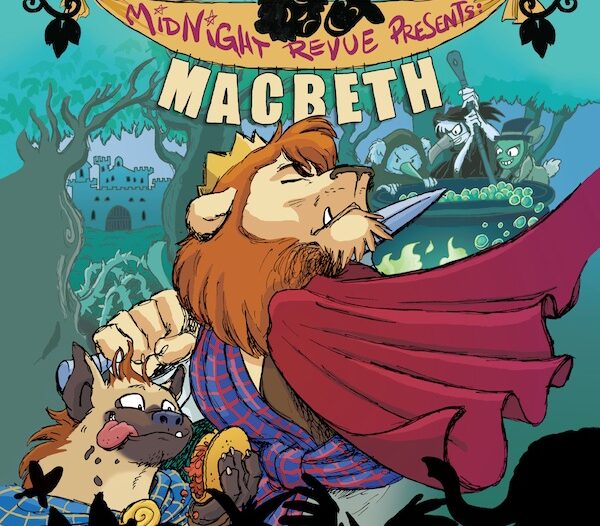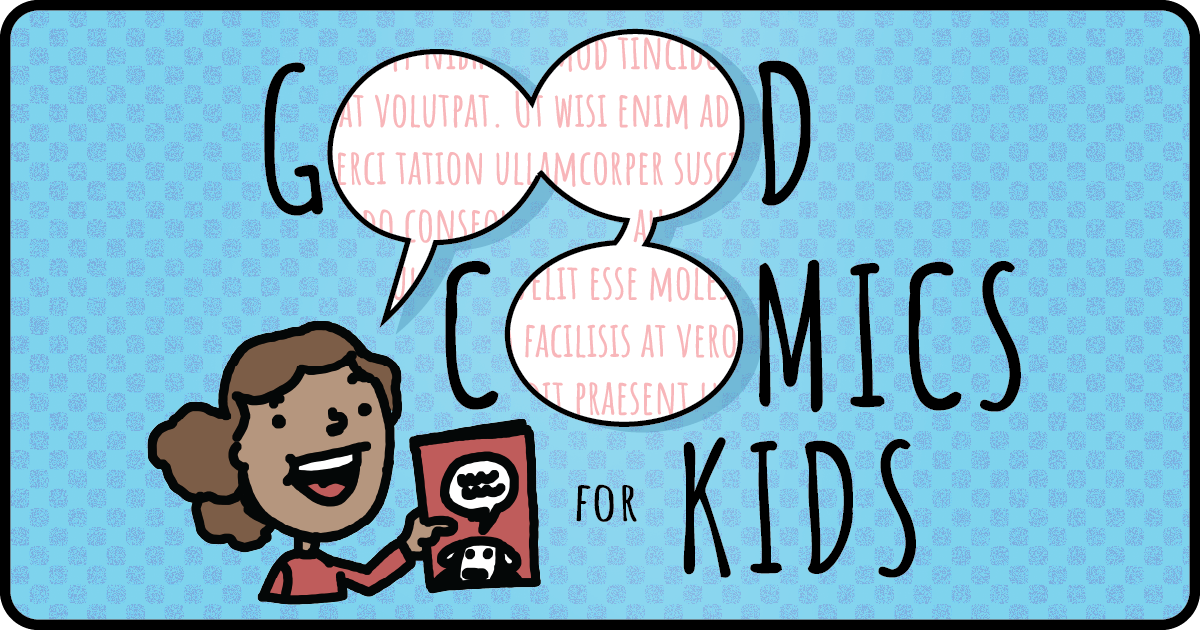
Exclusive interview and cover reveal: Stratford Zoo
Stratford Zoo, due out next fall from First Second, is a Shakespeare graphic novel with a twist: The play is enacted by animals in a zoo. The series, written by Ian Lendler and illustrated by Zack Gaillongo (of Broxo and Ewoks fame), kicks off with a fur-and-feathers production of Macbeth, and the second volume will feature Romeo and Juliet.
We are proud to bring you an exclusive first look at the cover of the book, along with an interview with Ian and Zack that sheds a little more light on the mysterious nighttime activities at the Stratford Zoo.
ADVERTISEMENT
ADVERTISEMENT
OK, so this book is about a zoo where the animals do Shakespeare plays at night? How does this come to be? Why???
Ian: Shakespeare is so deeply ingrained in our culture that it’s part of our collective mythology. I wanted kids to be able to understand it (and maybe a few college kids who didn’t have time to do the reading too). I grew up reading D’aulaire’s myth books and I wanted to do something accessible like that for Shakespeare. The animals were my way in. Why? I don’t know. It just happened.
Also, I watched a lot of Muppet Show when I was little.
How much of the book is devoted to the play and how much is framing tale?
Ian: I would say 85% of the book is the play and 25% is the framing set in the world of the audience and the zoo… have I mentioned that I’m terrible at math?
What is the cast of characters like? That lion on the cover seems to be a ham—is he the lead character?
Zack: The lion is indeed in the title role! He’s joined by lots of other animals in the zoo, ranging from cute to uncouth. His best buddy Banksy is played by a hyena, and his formidable wife, Lady Macbeth, is played by a very elegant leopard (joke spoilers). Macbeth’s chief opponent, Macduff, is a stork, and my favorite characters—the three witches—are brought to life by some adorable critters. I don’t have any confirmation on this, but I suspect that each of the animals is a bit like the characters they play!
How closely does the animals’ production hew to the Bard’s original?
Ian: Very close, except for dialogue. In general, my weakness as a writer is story, structure, plot, and character. And it turns out that Shakespeare guy was pretty darn good at those! That’s how we became co-writers. We had a good working relationship. He doesn’t talk much. Keeps to himself. I’ve heard that’s a British thing.
There are a lot of graphic-novel adaptations of Shakespeare’s plays out there. How will this one be different (besides the animals!)?
Zack: It’s actually funny.
Ian: Shakespeare’s language is the reason a lot of us love Shakespeare. It’s also the reason a lot of us wind up just reading the Cliff Notes (not that I ever did that in college). Elizabethan is hard work.
I wanted to strip away all the cod-pieces (ahem!) and dense language and show people that what Shakespeare was really good at was telling a story. And once people see how great the story is, they might be compelled to put down their Cliff Notes (because I definitely never ever read those in college) and read the Bard himself.
And quite frankly, Shakespeare stole most of his story ideas from other sources as well, so really, I’m just carrying on the tradition.
Ian, how did you get the idea for this story?
Ian: Well, I came up with a super title one day: “Macbeth.” But when I pitched it to my lovely agent, Tanya Mackinnon, she informed me that it was already taken. So I decided to settle for a co-writer credit.
Why did Macbeth seem like a good choice for the first volume?
Ian: It’s one of the big ones. And it seemed like a good challenge. How do you turn a bloody, violent tragedy into a funny book that’s kid-friendly? Turned out it was way easier than I thought. Most tragic characters are just buffoons with good job titles.
How does it feel to be writing dialogue around Shakespeare’s words?
Ian: Shakespeare wrote for the commoners of his day. People understood what the characters were saying. I think he’d be appalled that his plays are being presented in a way that only highly educated intellectuals can understand.
Zack, this seems like a departure from your earlier books, in that you are drawing real rather than imaginary creatures. How did you approach the character designs and drawing the animals?
ADVERTISEMENT
ADVERTISEMENT
Zack: Well, you’re forcing my hand and it appears that I need to reveal a little secret of mine. All creatures, real or imagined, come from the same place. A good imaginary creature is usually just an amalgam of many existing ones, or a stretching and pulling of a real life creature. So, designing the characters for this play was not much different! I always, always, always start by looking at the real animal first, and then sketching my version. I wanted to make sure I was drawing my version of a cartoon lion, not my version of someone else’s cartoon lion. Y’know?
What are the challenges involved in staging a play on the pages of a book?
Zack: Ian and I fought tooth and nail about this one! We even went through a period of only speaking to one another through our poor editor, Mark. There were threats and backstabbings and a rivalry fit for a Shakespearian play. Ok, none of that actually happened and I’m deliberately lying. But it WAS an important discussion we had to have!
There was talk about showing a lot of the stagecraft, lights, rigging, curtains. Making the props look like stage props. Things like that. But after a while, it all just becomes too meta. The comic is less about animals putting on a play and more about the play itself (which just happens to be put on by animals). The goal of any play is to cause the audience to buy into the illusion, which is why playgoers never say “Hey! That’s not a REAL knife! It’s just PLASTIC!” To that end, we agreed to mostly play the story parts of the comic straight. However, there are hints and nods and intermissions to show that this is a play and not an actual account of Macbeth’s life peppered throughout. Also, the Stratford Zoo audience is pretty rowdy. They hardly ever sit still or shut up.
Ian: The Elizabethan audience was pretty wild. During the show, people would eat, burp, yell, throw rotten fruit at bad shows, go to the bathroom, get drunk, fornicate. So it’s not much of a stretch to set it in a zoo.
Filed under: All Ages, Graphic Novels, Interviews
About Brigid Alverson
Brigid Alverson, the editor of the Good Comics for Kids blog, has been reading comics since she was 4. She has an MFA in printmaking and has worked as a book editor, a newspaper reporter, and assistant to the mayor of a small city. In addition to editing GC4K, she is a regular columnist for SLJ, a contributing editor at ICv2, an editor at Smash Pages, and a writer for Publishers Weekly. Brigid is married to a physicist and has two daughters. She was a judge for the 2012 Eisner Awards.
ADVERTISEMENT
ADVERTISEMENT
SLJ Blog Network
One Star Review, Guess Who? (#202)
This Q&A is Going Exactly As Planned: A Talk with Tao Nyeu About Her Latest Book
Parsing Religion in Public Schools
Take Five: LGBTQIA+ Middle Grade Novels
ADVERTISEMENT









This looks so great! I’m already putting it on my reading list for the fall.
Looking forward to getting a copy of this, it sounds fun and very cool!